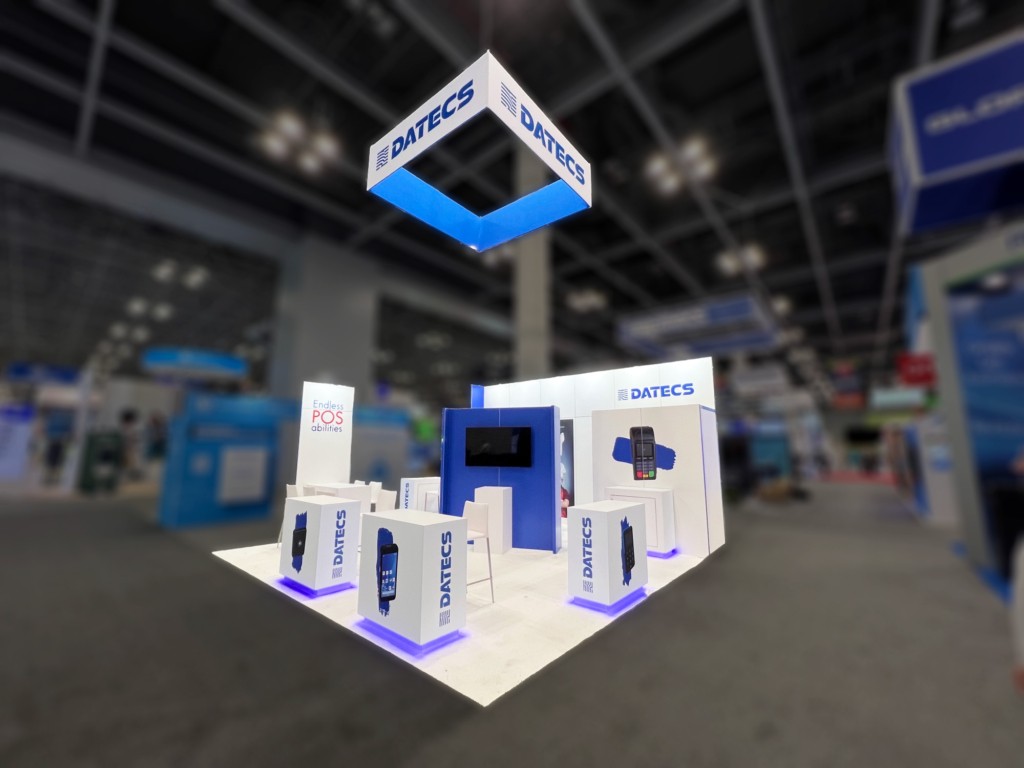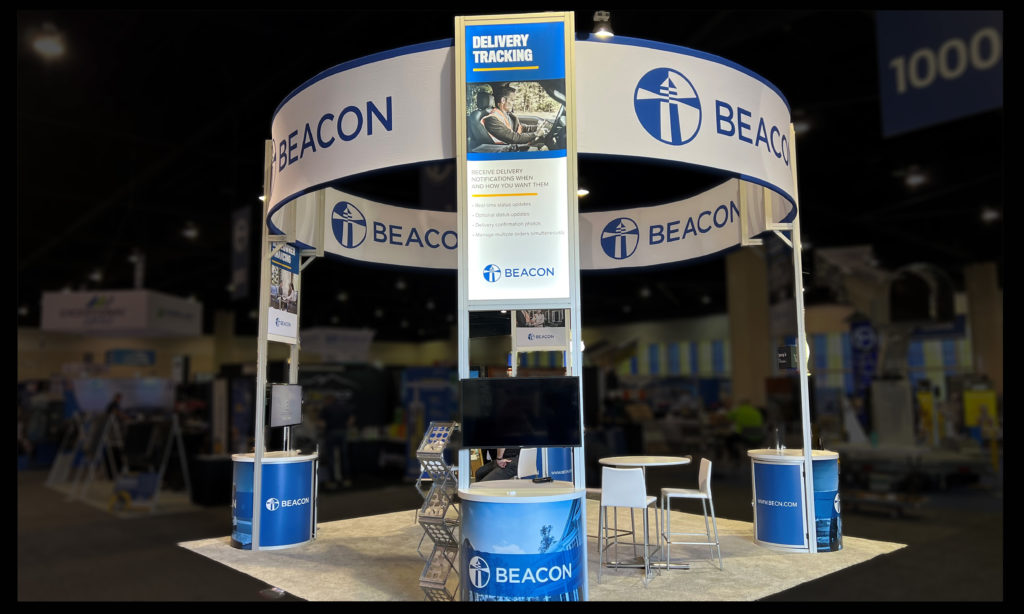It’s a no-brainer that Augmented Reality (AR) and Virtual Reality (VR) are literal and figurative head-turners. While the former overlays digital information and graphics on top of real-world images, the latter stimulates one’s physical presence in a virtual world.
Although AR/VR is still in varying degrees of development and in the very early stages of mass adoption, they are sure-shot attention grabbers for marketing and advertising. This means they are sure to draw a crowd if you integrate them into your trade show exhibit.
In this article, we will explore how you can leverage the prowess of AR/VR tech to entice attendees and potential customers to your next trade show. When you unlock its potential, it will take your branding to another level.
Let’s begin with a quick primer on AR/VR and the basic concepts surrounding its development and execution in various industries.
As previously mentioned, Augmented Reality is a technology that overlays digital information or virtual objects onto the real world. In other words, it allows users to see and interact with virtual objects integrated into their physical environment in real-time. This is done with high-tech devices, such as smartphones, tablets, or purpose-built AR glasses.
The most popular AR use case would be graphics overlay on replays of live sports so that officials can check if a ball crossed the line.
In contrast, Virtual Reality creates immersive, simulated environments that are entirely computer-generated. Users can enter these environments using specialized VR headsets, which transport them to a world that can be manipulated and interacted with in real time.
Needless to say, VR is big in the gaming domain, but it has many use cases across different industries. Concepts like the metaverse would be a significant paradigm shift expected to make VR much more mainstream in the next few years.

If you have a complex and technically nuanced product or offering that you would like to showcase during a trade show, AR and VR technologies can provide a highly engaging and immersive way to engage with potential clients or attendees.
You can create a more interactive and dynamic experience for your audience, providing a deeper understanding of your product that cannot be achieved through traditional slides or presentations alone.
Whether you want to showcase a gallery, tour a facility, or demonstrate a process end-to-end, VR technologies like 3600 videos can take your exhibit booth visitors far beyond the confines of the venue.
Advertising the use of AR/VR technology for your production demonstration at a trade show is a sure attention-grabber that will draw visitors to your booth. It can create a sense of excitement and intrigue around your brand, enticing attendees to explore your offerings and learn more about what you have to offer.
This high-end technology can also position your brand as innovative and forward-thinking, which is a powerful differentiator in crowded trade show exhibit environments.
AR/VR experiences at trade shows must be seamless and free of technical hiccups. While this technology is novel and exciting, if it’s not well-presented or easy to use, it can quickly turn a trade show experience into a frustrating one for attendees.
Here are some best practices that can help your trade show make the most of AR/VR with little to no trouble:
While AR/VR technology can be highly engaging, it’s important to keep the experience simple. It must be accessible and easy to use for attendees. Ensure that it’s intuitive and user-friendly.
Technical issues can quickly derail the impact of AR/VR demonstrations at a big industry event. You must have adequate technical support from staff knowledgeable about the tech.
Tailoring AR/VR experiences with the attendee in mind is crucial to delivering a successful and engaging trade show experience. By understanding your audience and designing experiences that cater to their interests and preferences, you can maximize the tech’s impact on your brand.
Centering the exhibit on the audience is the best way to create a valuable experience for them. You should also gather feedback and insights from attendees to further improve your presentation.

Now that you understand the game-changing potential and possibilities that AR/VR technology will bring to trade shows, it’s essential to stay grounded in reality. Find ways to implement this technology practically in the exhibition setting.
Here are some practical takeaways to troubleshoot your exhibit:
Therefore, this technology should be used as a “second step” in the trade show display funnel—after the booth has drawn the crowd’s attention to the booth and conveyed its value proposition.
Ultimately, the success of integrating AR/VR technology into your booth design shows depends on its ability to enhance the overall trade display experience. It promises to provide an engaging and memorable experience for attendees.
Incorporating AR/VR technology into your business operations may require a significant experimentation to determine the best approach that suits your needs. After all, everything involves some form of learned experience.
With or without AR/VR, don’t hesitate to seek the expertise of a booth design company for your next exhibit. Contact Metro Exhibits today for all your trade show needs.
Want to gain an edge? Get ideas, tips, and
resources from the exhibit industry's top experts.